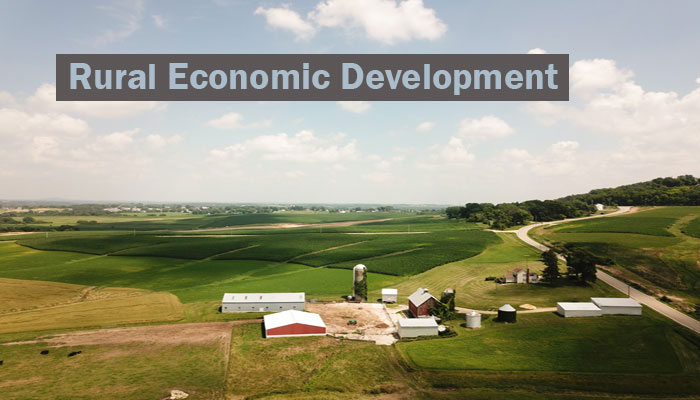Rural Economic Development

THE RURAL ECONOMY Introduction Rural regions primary sectors (agriculture, forestry, mining and fisheries) provide the foundations for economic activity. But they play a larger economic role than this and their economies are far more complex. Rural regions are an important location for manufacturing and most rural workers in OECD countries are now employed in service sectors, including: tourism, health care, education, finance and public administration. Rural areas also contribute to the quality of life of society as a whole, because they contain important public or quasi-public goods, such as clean environments, attractive landscapes and cultural heritage. To accommodate the changing circumstances of rural dwellers, firms and places, the approach to rural development in OECD countries can be best described as “modernising and “adapting”. Rural policy has had to evolve beyond the traditional, sector-based model, with its almost exclusive focus on agriculture. Today rural development policies are embracing more strategies that have a spatial context, that give priority to investments over subsidies, and that encourage a partnership-based, multi-stakeholder policy design and implementation framework.
The framework that is emerging from this shift is often referred to in OECD countries as the “New Rural Paradigm” (NRP) and the early ebb and flow of these changes was set out in a 2006 OECD publication with the same title. At its core, the NRP represents an approach to rural policy that is grounded in current rural conditions and opportunities in rural areas. Recent analysis of national policy frameworks to promote rural development, through the prism of the NRP, reinforce these trends, notably the increase in multi-sectoral, place-based strategies that identify and better exploit the development potential of rural areas. Yet while the paradigm itself may no longer be new, more than half a decade since it was formulated, it remains highly relevant, as governments have often been faster to pick up the language of the NRP than the practice. Thus, the challenge of completing the transition in rural policy remains.
Rural areas are characterized by a great diversity of economic activities, including processing and marketing of agricultural products, tourism, mining and services. Ministries of labour should take the lead in ensuring that social and labour issues are effectively reflected in rural policies.
Areas of opportunity
• Local foods
• Tourism
• Forestry
• Renewable energy
Threats to Rural Areas
• Declining local fiscal capacity
• Demographic change
• Climate change effects
• Single industry towns
The 6 pillars of the OECD skills strategy:
1. Responsiveness -- ensuring that education providers can adapt to changing demand;
2. Quality and efficiency in learning provision -- ensuring that the right skills are acquired at the right time, right place and in the most effective way;
3. Flexibility in provision -- allowing people to study/train what they want, when they want and how they want;
4. Transferability of skills – ensuring that the skills gained at school are documented in a commonly accepted and understandable form;
5. Ease of access e.g. reducing barriers to entry;
6. Low cost of re-entry e.g. granting credits for components of learning, modular instruction, credit accumulation and transfer ease.
Innovation policy refers to a set of policy actions that promote innovative activity in order to reach societal goals. While Innovative activity refers to the creation, adaptation and adoption of new or improved products, processes and services. Innovation can take different forms:
1. Working in new ways: this might involve rural development approaches that apply new ideas, using new techniques, focusing on alternative markets, bringing diverse sectors and stakeholders together via new networking methods, supporting new priority groups, or finding new solutions to social, economic and environmental challenges.
2. Developing new products and services: these often result from testing innovative ways of working and can be created through the application of new or novel techniques, partnerships, technology, processes, research and thinking.
3. Adapting proven approaches to new circumstances: is also recognised as an effective means of creating locally significant innovative rural developments. These types of innovative actions are often facilitated by knowledge transfer between regions. Three Rural Economic Challenges
Population levels in rural America have declined since 2010, perhaps the first time that rural populations have declined through a decade.
1. Rural America now represents less than 20% of the U.S. population. Nonetheless, with 97% percent of U.S. land area considered rural,
2. Rural America will continue to have an outsized importance economically and politically. The United States Senate, for example, is a rural-dominated institution with a majority of the Senate seats coming from states that in total represent just 18% of the US population.
3. Nonetheless, economic development in rural America faces a series of challenges.
Tech Stack






















Lets`s Talk